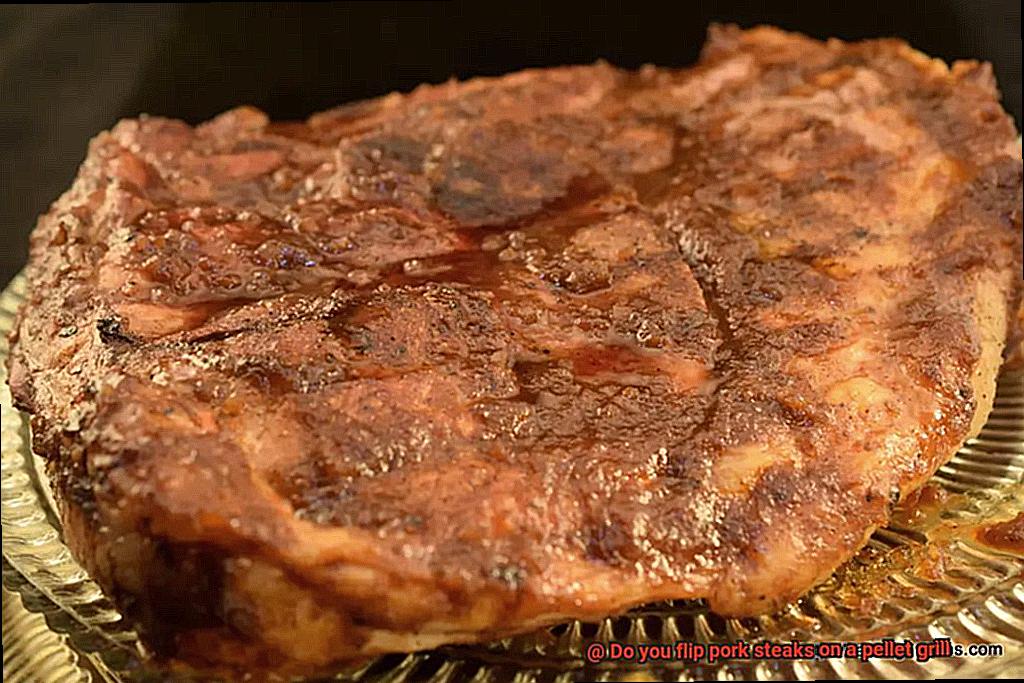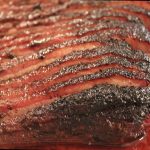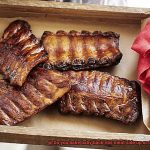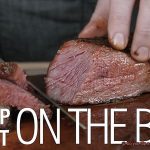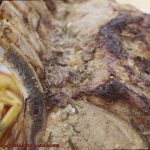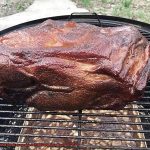Tired of dry, flavorless chicken? Ready to up your cooking game? Then, it’s time to spatchcock your chicken.
This technique removes the backbone, letting it lay flat and cook evenly. But here’s the question: do you flip spatchcock chicken when cooking?
Let’s settle this debate once and for all. In this blog post, we’ll explore the arguments for and against flipping your spatchcock chicken.
Plus, we’ll share some tips and tricks for achieving juicy, succulent results. Get ready to wow your family and friends with this game-changing method.
Let’s get started now.
Contents
Advantages of Not Flipping Spatchcock Chicken
When it comes to grilling, one of the most popular techniques for cooking chicken is spatchcocking. This method involves removing the backbone and flattening the bird, resulting in a more even cooking process.
While some may debate whether or not to flip the chicken during cooking, there are several advantages to leaving it intact and not flipping.
Here, we will explore the benefits of not flipping spatchcock chicken, including even cooking, crispy skin, time-saving, retained juiciness, and simplified presentation.
Even Cooking:
Leaving the spatchcock chicken skin side up throughout the cooking process ensures an even distribution of heat. The flattened shape allows the heat to reach every part of the bird, resulting in perfectly cooked meat. No need to worry about undercooked or overcooked sections when you leave it intact.
Crispy Skin:
Achieving a crispy and golden brown skin is one of the highlights of spatchcock chicken. When cooked skin side up, the rendered fat from the skin drips down onto the meat, basting it and creating a deliciously crunchy exterior.
The combination of tender meat and crispy skin adds a delightful textural contrast to each bite.
Time-Saving:
Cooking a whole chicken without spatchcocking often requires flipping or rotating it to ensure even cooking on all sides. However, when you leave the chicken intact and cook it skin side up, there is no need for constant monitoring or flipping. This time-saving advantage allows you to focus on other tasks or prepare accompanying dishes while your chicken cooks to perfection.
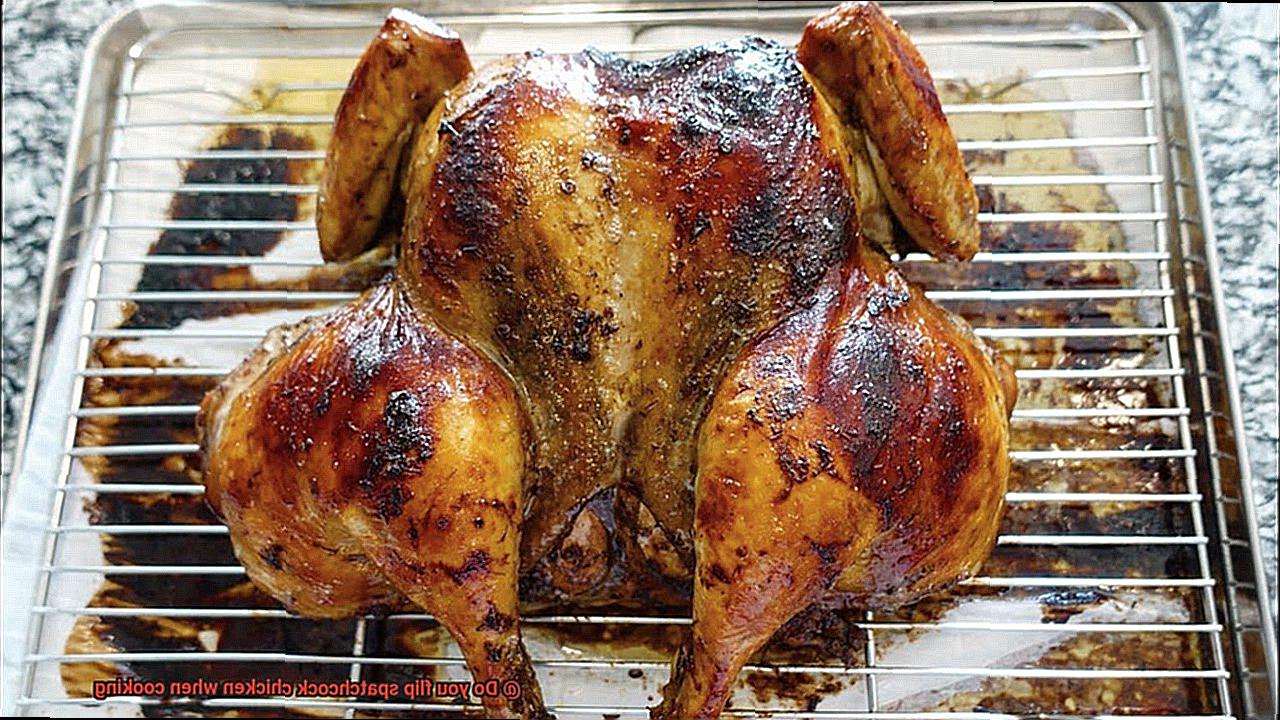
Retained Juiciness:
The skin acts as a barrier that helps retain the natural juices and moisture within the chicken. By not flipping it, you prevent these precious juices from escaping too quickly during cooking. This results in tender and juicy meat that bursts with flavor with every bite.
Simplified Presentation:
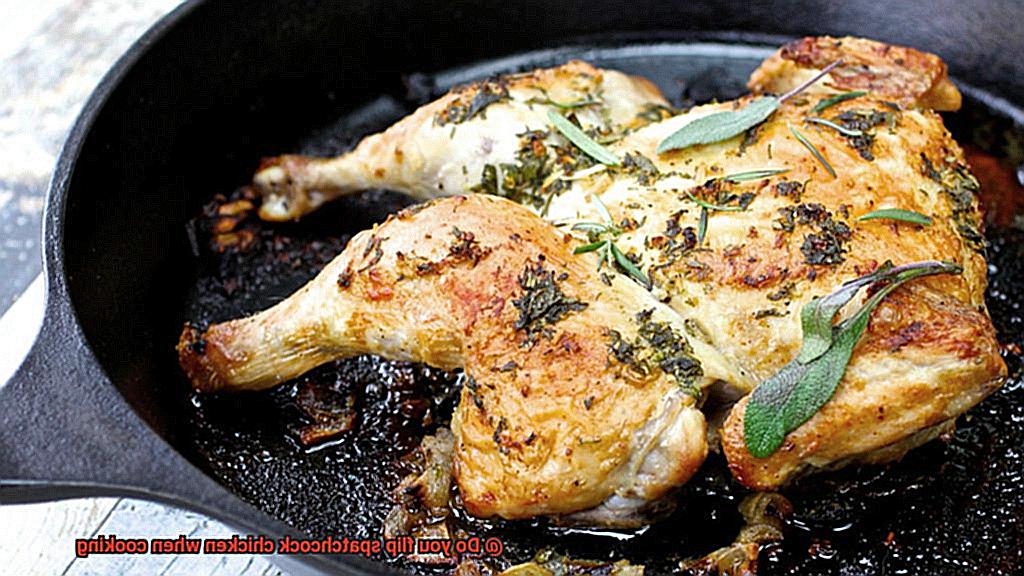
Leaving the spatchcock chicken intact simplifies its presentation when serving. With the skin side up during cooking, you are left with a beautifully browned and crispy skin that makes for an impressive and appetizing presentation. Whether you’re serving the chicken whole or using it as a centerpiece for a special occasion, the simplified presentation adds an element of elegance to your meal.
Disadvantages of Not Flipping Spatchcock Chicken
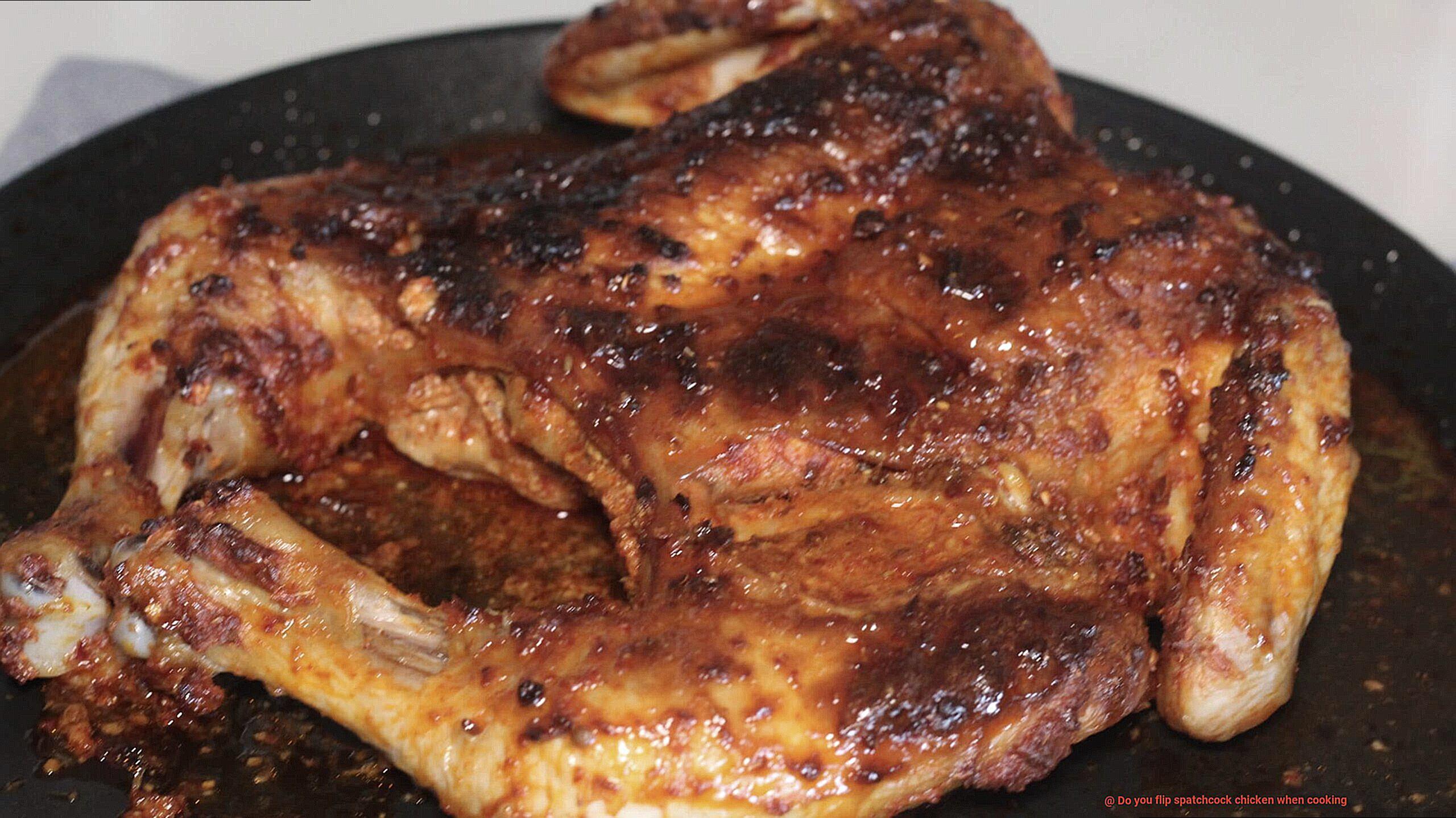
Grilling spatchcock chicken is a popular technique that promises a juicy and flavorful meal. However, some grillers may be tempted to skip the step of flipping the chicken during cooking. In this blog post, we will explore the disadvantages of not flipping spatchcock chicken and why it is an essential step in achieving the perfect grilled chicken.
Uneven cooking:
When you cook a whole chicken without flipping it, the heat distribution becomes uneven. One side of the chicken receives direct heat, while the other side remains shielded from the flames. This can result in one side being overcooked and dry, while the other side remains undercooked. By flipping the chicken, you ensure that both sides cook evenly, leading to a perfectly cooked bird.
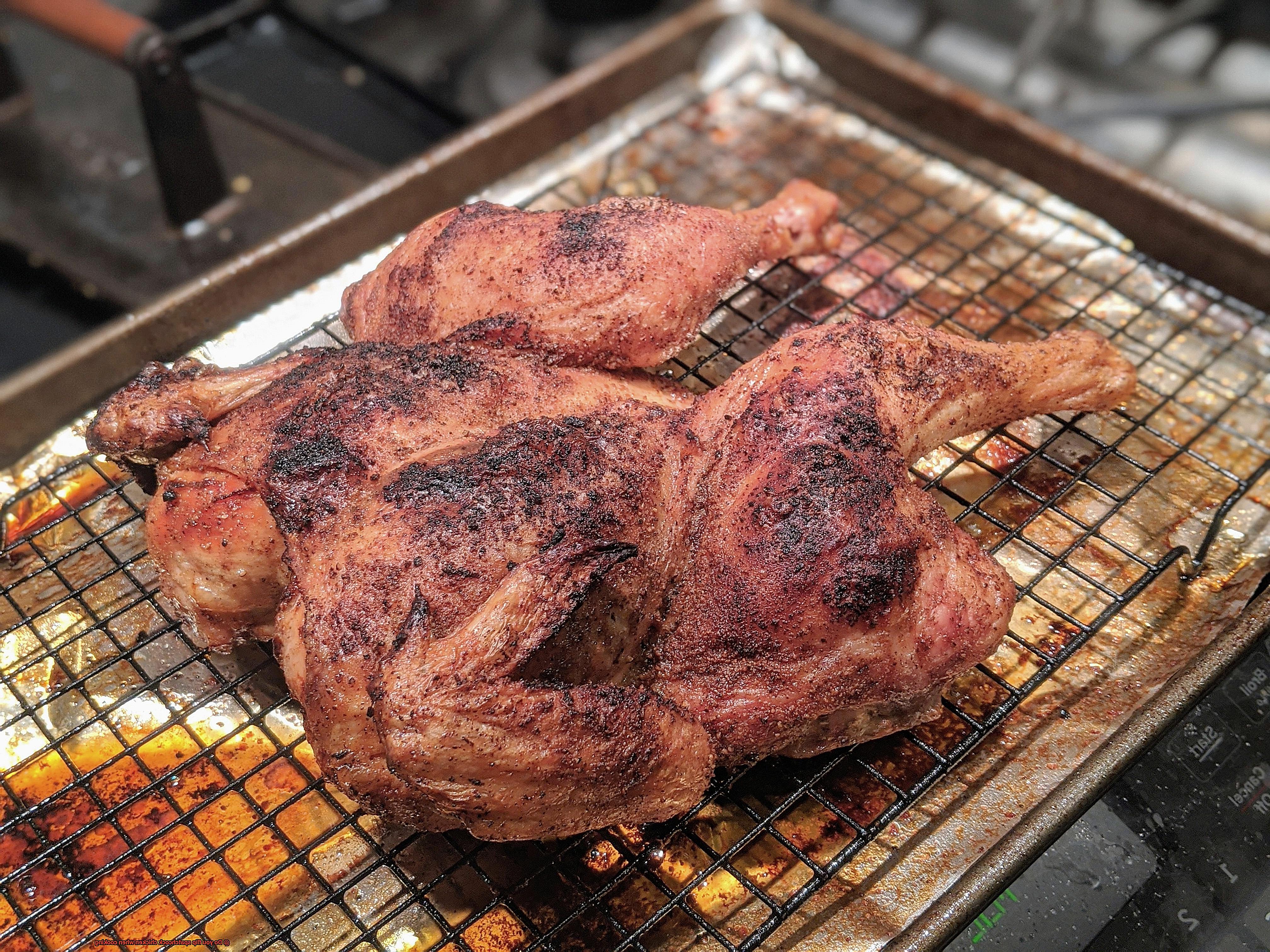
Crispy skin:
One of the hallmarks of spatchcock chicken is its crispy skin. However, if you don’t flip the chicken, you run the risk of ending up with unevenly crispy skin. Flipping allows both sides of the chicken to come into contact with direct heat, promoting even browning and crisping of the skin. The result is a mouthwatering, golden-brown exterior that adds texture and flavor to every bite.
Moisture loss:
Cooking spatchcock chicken without flipping can lead to moisture loss. As the natural juices accumulate on one side, that side can become soggy and lose its moisture content, while the other side remains dry. Flipping the chicken allows for even distribution of these juices, preventing one side from becoming overly moist and another from becoming too dry. The result is a succulent and juicy chicken throughout.
Missed flavor opportunities:
Flipping spatchcock chicken presents an excellent opportunity to baste it with marinades or sauces. By flipping the chicken and reapplying the marinade or sauce, you ensure that both sides are adequately coated and infused with flavor. Skipping this step may result in one side lacking that extra burst of flavor, compromising the overall taste of the dish.
Advantages of Flipping Spatchcock Chicken
In the sizzling world of grilling, flipping spatchcock chicken is like turning the pages of a thrilling novel. It’s an essential step that unlocks a juicy and flavorful masterpiece.
Neglecting to flip this succulent bird results in uneven cooking, leaving one side parched in the desert while the other side drowns in a soggy swamp.
A graceful flip ensures even heat distribution, resulting in perfectly cooked poultry that will make your taste buds sing with delight.
Advantage 1: Even Cooking
Flipping spatchcock chicken promotes even cooking throughout the bird. By exposing both sides to the heat source, you ensure more consistent cooking. This is crucial on the grill, where certain areas may be hotter than others. Flipping prevents overcooking or undercooking certain parts, ensuring every bite is tender and succulent.
Advantage 2: Crispy Skin
Flipping spatchcock chicken achieves crispy and golden-brown skin on both sides. When flipped, the skin has a chance to crisp up, adding a delightful texture and flavor. The contrast between juicy meat and crispy skin is a heavenly combination that will have your taste buds dancing with joy.
Advantage 3: Faster Cooking Time
Flipping spatchcock chicken reduces overall cooking time. By exposing both sides to the heat source, you encourage quicker and more efficient cooking. Whether you’re short on time or simply impatient for a delicious meal, flipping ensures your chicken is ready faster without sacrificing flavor or tenderness.
Advantage 4: Enhanced Flavor
Flipping spatchcock chicken enhances flavor through better browning and caramelization. The Maillard reaction, triggered by high heat, creates rich flavors and aromas. By flipping the chicken, you maximize this reaction on both sides, resulting in a more tantalizing and flavorful end product that will leave you craving more.
Advantage 5: Visual Appeal
Flipping spatchcock chicken significantly improves its visual appeal. A perfectly cooked bird, flipped during the cooking process, showcases an even golden-brown exterior on both sides. This impressive presentation is perfect for wowing guests or elevating your own dining experience. Feast your eyes on a masterpiece that will make you proud.
Disadvantages of Flipping Spatchcock Chicken
Like any cooking technique, there are potential drawbacks and challenges to consider. In this article, we will explore the disadvantages of flipping spatchcock chicken, shedding light on the obstacles that may arise when using this method.
Tricky Handling:
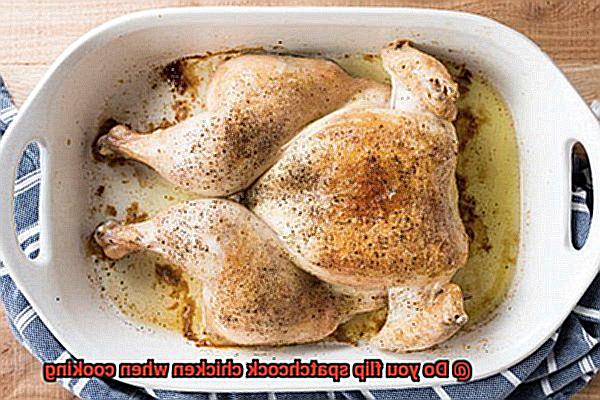
Spatchcocking involves removing the backbone and flattening the chicken, making it more difficult to handle on the grill or in the oven. Flipping the chicken requires deft maneuvering to prevent losing precious juices and seasonings.
Uneven Cooking:
Flipping spatchcock chicken can disrupt the cooking process, resulting in unevenly cooked meat. The skin side may become overcooked while the meat side remains undercooked, leading to an undesirable texture and taste.
Sticking to the Grill:
Flipping increases the risk of the chicken sticking to the grill or pan. Without proper oiling or seasoning, there’s a chance of tearing the skin or sacrificing flavorful crust during flipping.
Loss of Moisture:
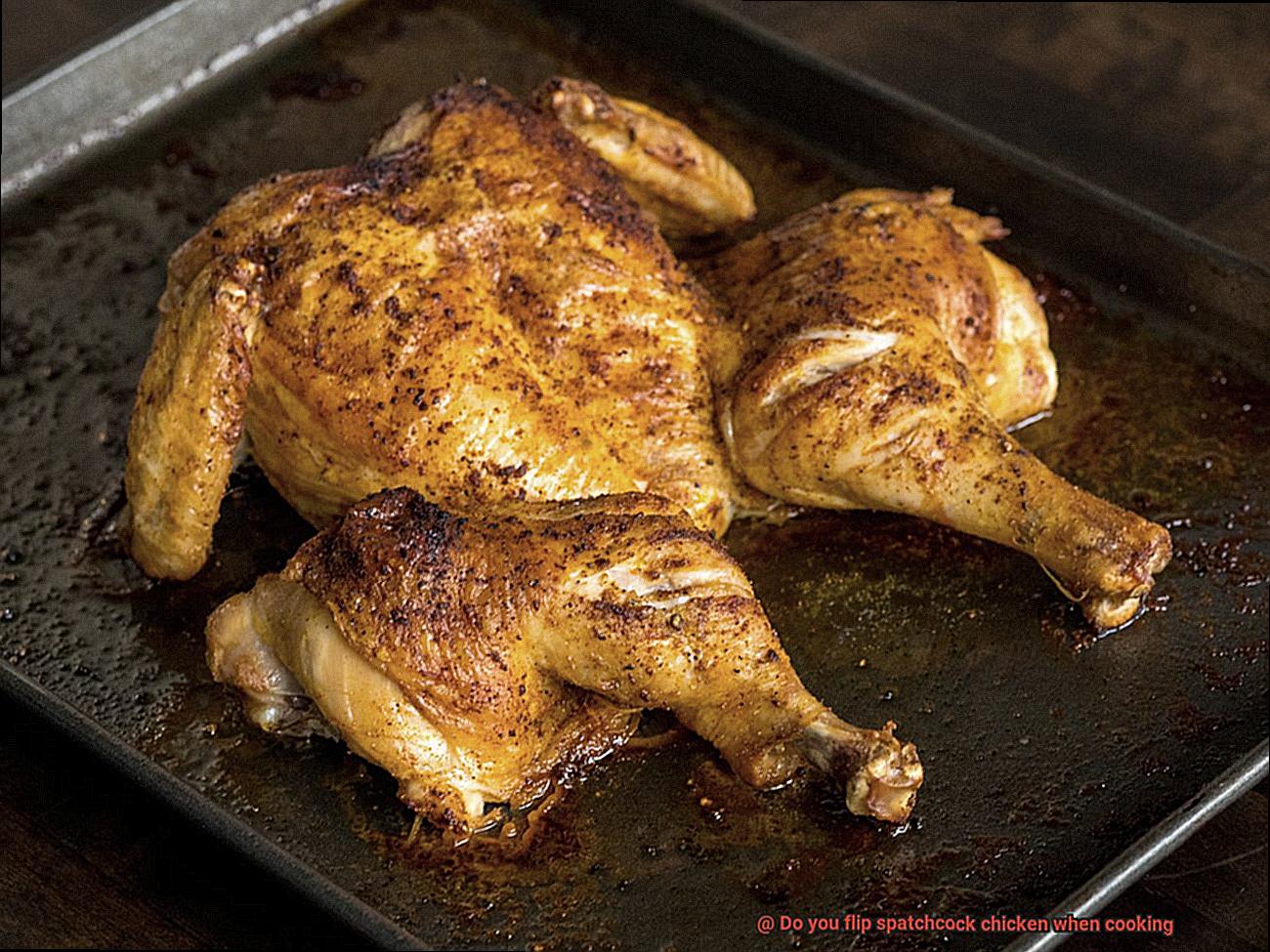
When flipping spatchcock chicken, there’s a possibility of losing moisture as some precious juices may escape. Accidental punctures or tears in the skin during flipping can result in drier meat.
Time-Consuming:
Flipping spatchcock chicken requires extra attention and care, adding minutes to your cooking time. If you’re seeking a quick and hassle-free method, flipping may not be worth the effort.
Factors to Consider When Deciding Whether or Not to Flip
When deciding whether or not to flip spatchcock chicken, there are several important factors to consider. These factors can greatly impact the outcome of your dish, ensuring that you achieve perfectly cooked, flavorful chicken every time. Let’s take a closer look at these factors:
- Thickness and Size of the Chicken: The thickness and size of the spatchcock chicken play a crucial role in determining whether or not to flip it while cooking. If you have a thick and large bird, flipping it during cooking can help ensure even cooking throughout. By flipping, you allow the heat to distribute more evenly, reducing the risk of undercooking or overcooking certain parts.
- Cooking Method: The cooking method you choose can also influence whether flipping is necessary. For example, if you are grilling the spatchcock chicken directly over high heat, flipping it can help prevent excessive charring or burning on one side. However, if you are using indirect heat in an oven or smoker, flipping may not be necessary as the heat is evenly distributed throughout the cooking process.
- Skin Crispness: Many people enjoy crispy skin on their spatchcock chicken. If achieving a perfectly crispy skin is your goal, flipping the chicken can help ensure that both sides of the skin get evenly browned and crisp. However, be cautious not to flip too frequently or too early in the cooking process, as this can cause the skin to stick to the cooking surface and lose its desired crispness.
- Cooking Time: The cooking time required for spatchcock chicken is another important factor to consider. If you are using a shorter cooking time at higher heat, flipping may not be necessary as both sides will cook evenly. However, if you are employing a longer cooking time at lower heat, flipping can help ensure that both sides reach the desired internal temperature and doneness.
- Flavor and Juiciness: Flavor and juiciness also come into play when deciding whether or not to flip spatchcock chicken. By keeping the chicken skin-side down for a longer period, you allow the fat in the skin to render and baste the meat, resulting in a juicier and more flavorful chicken. However, flipping too early or too frequently may cause the natural juices to run out, leaving the meat drier.
- Cooking Equipment: The type of cooking equipment you are using can also impact whether flipping is necessary. If you are grilling on a surface with uneven heat distribution, flipping can help compensate for hot spots and ensure even cooking. Similarly, if you are using a pan on the stovetop, flipping can help distribute the heat more evenly and prevent hot spots.
How to Successfully Flip a Spatchcock Chicken
Flipping a spatchcock chicken is a skill that will take your cooking prowess to the next level. Don’t be intimidated by the term “spatchcock” – with a few insider tips and techniques, you’ll be flipping that chicken like a pro. Grab your tongs, ignite the grill, and let’s dive into the art of successfully flipping a spatchcock chicken.
Understanding Spatchcocking:
Before we embark on the flipping process, it’s crucial to understand spatchcocking. This technique involves removing the backbone from the chicken and flattening it out, resulting in a more even cooking process and making flipping easier later on. The flattened bird also cooks faster, ensuring juicy meat with perfectly crispy skin.
Choose the Right Tools:
To execute a flawless flip, you’ll need the right tools at your disposal. Opt for sturdy tongs or a large spatula to provide you with optimal control over the chicken. A firm grip is essential to prevent any accidents or mishaps during the flipping process. Additionally, don’t forget to oil your grill or baking sheet to prevent sticking.
Crisp that Skin:
Before attempting to flip, make sure the skin is beautifully crisped and golden brown on one side. Preheat your grill to medium-high heat and place the spatchcock chicken skin-side down. Allow it to cook for 15-20 minutes, or until the skin has achieved that perfect crunch.
The Flipping Technique:
Now comes the moment of truth – flipping the spatchcock chicken. To execute this maneuver with finesse, slide one spatula or tong underneath one side of the chicken, ensuring you have a firm grip on both the meat and skin. Use another tool on the opposite side for support and gently lift and flip the chicken in one swift motion. The key is to maintain control and keep the chicken intact.
Be Gentle and Cautious:
During the flipping process, it’s crucial to exercise caution and gentleness to avoid tearing or damaging the meat. Keep your hands steady, use coordinated movements, and be mindful not to apply too much pressure. A delicate touch will ensure a successful flip without compromising the integrity of the chicken.
Cook Until Perfectly Done:
After the flip, allow the other side of the spatchcock chicken to cook for an additional 15-20 minutes or until it reaches an internal temperature of 165°F (74°C). This ensures that your chicken is thoroughly cooked and safe to eat. Use a meat thermometer to check for doneness, inserting it into the thickest part of the meat without touching bone.
Tips for Achieving Perfectly Cooked Spatchcock Chicken
Spatchcock chicken is a popular cooking technique that involves removing the backbone of the chicken and flattening it out before cooking. This method ensures even cooking and crispy skin. One question that often arises when cooking spatchcock chicken is whether or not to flip it during the cooking process. In this blog post, we will explore the pros and cons of flipping spatchcock chicken and provide tips for achieving perfectly cooked results.
The Flipping Advantage: Even Browning and Heat Distribution
Flipping the spatchcock chicken halfway through the cooking process is recommended by many chefs. This technique ensures that both sides of the chicken receive even browning, resulting in a beautiful golden color all around. Additionally, flipping allows for more even heat distribution, guaranteeing that each bite is cooked to perfection.
Crispy Skin Conundrum: The Risk of Sticking
One concern raised by those against flipping is that it may cause the skin to stick to the cooking surface, resulting in less crispy skin. However, using proper tools like tongs or a spatula and handling the chicken gently can minimize this risk. By being careful and attentive, you can achieve both a tender and flavorful interior and a crispy, golden-brown exterior.
Tender Juiciness: Moisture Loss?
Opponents argue that flipping spatchcock chicken disrupts the cooking process, potentially resulting in a loss of moisture and tenderness in the meat. However, with proper monitoring and adjustment of cooking times, flipping can actually help redistribute juices and fats, enhancing the overall flavor and juiciness of the chicken.
Cooking Methods Matter: Grilling vs. Roasting
When grilling spatchcock chicken, flipping is generally recommended to ensure even cooking and achieve crispy skin on both sides. The direct heat from the grill benefits from flipping as it prevents one side from becoming overly charred. On the other hand, when roasting in the oven, flipping may not be necessary as the heat circulates evenly around the bird.
Experimentation is Key: Finding Your Perfect Method
Ultimately, whether to flip or not is a matter of personal preference and experimentation. Consider factors such as your desired level of crispiness, cooking method, and overall cooking time. Practice and experience will help you discover what works best for your taste buds. Remember to use a meat thermometer to ensure that your spatchcock chicken reaches an internal temperature of 165°F (74°C) for safe consumption.
voK-zj1aOko” >
Conclusion
When it comes to cooking spatchcock chicken, the question of whether or not to flip it often arises.
Well, let me tell you, flipping that succulent bird is not necessary. By spatchcocking the chicken, you’re already ensuring even cooking and crispy skin.
So, why mess with perfection? Just let it roast away on one side and savor the deliciousness that awaits.
No need to fuss or fret – your spatchcock chicken will turn out beautifully without any flipping required.

